Chocolate Crossroads: Chocolate and Cocoa Avenues, Southeast Corner
Introduction
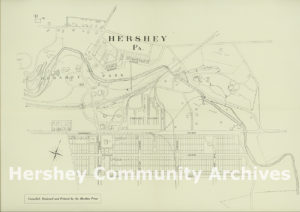
In early 2011 construction began a two year project to straighten the intersection of Cocoa and Chocolate Avenues and build a new bridge over the railroad tracks.
As much as we talk about how Hershey has changed since Milton Hershey’s death in 1945, changes to Hershey’s physical landscape were also part of the community during his lifetime. This was particularly true for the intersection of Chocolate and Cocoa Avenues.

Chocolate Avenue, Hershey’s main street, was the new name given to the Berks and Dauphin County Turnpike, a well established 19th century road that linked Lebanon and Harrisburg, Pennsylvania. The four corners created by the intersection of Chocolate and Cocoa Avenues formed the town center.
Southeast corner
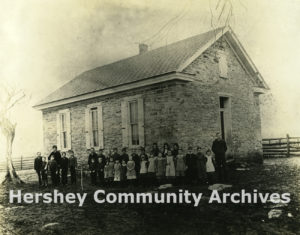
Derry Township was still very rural when Milton Hershey returned to Derry Township in 1903 to build his chocolate factory.

Public education was provided through one-room schools, including Greiner School, located at the southeast corner of Chocolate and Cocoa Avenues. From the start, providing good schools was one of Milton Hershey’s primary concerns. With Mr. Hershey’s financial support, McKinley School, a new, two story building, was completed in 1905. McKinley School replaced four of the Township’s 14 one-room schools and enabled the School District to establish a public high school.

Hershey’s rapidly growing student population led to the school being enlarged in 1910. That addition proved to be inadequate and The M.S. Hershey Consolidated School was built in 1914 to better meet the needs of Hershey’s students.
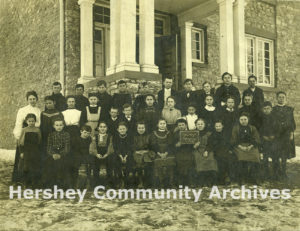
McKinley School was quickly repurposed as Hershey’s first community center. The building housed an auditorium that was used for showing movies, live theater, vaudeville, concerts and lectures. The Employment and Information Bureau and Hershey’s public library moved across the street from the Cocoa House. The second floor contained meeting rooms for community organizations.
Moving forward: Plans for a community center
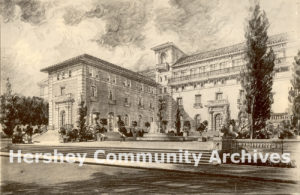
In November 1915 the Hershey Press published an article announcing plans to build a new community building that would contain a full range of cultural and recreational facilities on the southeast corner of Chocolate and Cocoa Avenues. Unfortunately World War I and subsequent financial challenges for Hershey Chocolate Company delayed its construction. Finally, groundbreaking took place in November 1928 . The building was constructed using the original 1915 plans. It was completed in September 1932 and officially dedicated in September 1933 as part of the town’s 30th anniversary celebration.


Serving the community
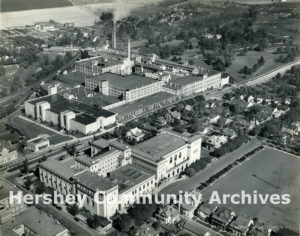
The massive limestone building was six stories tall and contained nearly six acres of floor space. The building housed a gymnasium, indoor swimming pool, bowling alley, game room, driving range, a 600 seat Little Theater, the 1,904 seat Community Theatre, meeting rooms, boarding rooms for men, an expansive reception hall, dining room, cafeteria, the Hershey Public Library, the Hershey Hospital (1932-1941) and from 1938-1965, the Hershey Junior College. Hershey’s Men’s Club operated out of the building and benefited from all the recreational facilities.
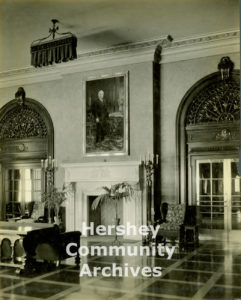

Learn more about the other corners of the intersection: